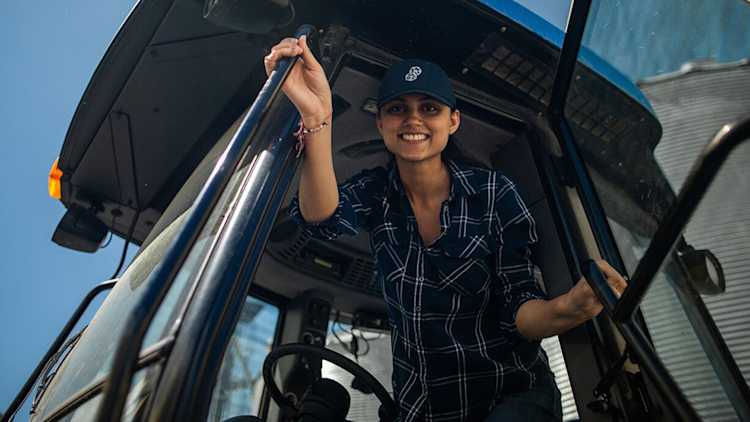Health and safety on the farm: Protecting our heritage

The farm is both a workplace and a living space where adults and children spend much of their daily lives, exposing them to a wide range of hazards and risks associated with the activities that take place there. Agriculture is considered one of the most hazardous sectors of the economy.
In Quebec, for example, statistics from the Institut national de santé publique (INSPQ) show an average of 16 fatalities and 174 hospitalizations per year for every 100,000 people working in agriculture. Machinery is often the cause, especially among children (60% of deaths) and people aged 65 and over (69% of deaths). In fact, almost half of all fatal accidents involve a tractor. Other major causes of injury include falls from heights, working with animals, working in confined spaces and traffic collisions.
“This reality underscores the importance of taking precautions to ensure everyone’s health and safety,” says Isabelle Sauriol, occupational health and safety manager for the Union des Producteurs Agricoles (UPA). “As a business owner, you're responsible for everything related to health and safety on your farm. Your efforts not only help protect you, your employees and your family, but also improve productivity and the work environment.”
Inspection and identification of hazards
It’s important to thoroughly examine your farm to identify the various risks of potential accidents or health hazards, whether chemical, ergonomic, physical, biological, psychosocial or equipment related. Rigorous identification of these risks will allow you to implement preventive measures and tools such as written procedures for safe work practices, records, inspection checklists, protective equipment and a first aid kit. In this regard, it is highly recommended that you include a health and safety section in your employee handbook to educate workers about hazards, prevention rules, emergency procedures and their rights and responsibilities.
Preventive measures
By looking after everyone's well-being, you're investing in the success and sustainability of your business.“The installation of protective devices on tractors such as roll-over bars and guards, the systematic use of seat belts and the use of machine guards are particularly effective preventive measures,” says Denis Roy, UPA’s manager of finance and farm labour. “Safety decals, equipment instructions, road signs such as speed limit and children at play signs and an ergonomic guide are also useful. In addition, regularly updating these practices for new safety standards will ensure a safe and proactive work environment.”
In Quebec, the Act to modernize the occupational health and safety regime requires all employers to prevent accidents and occupational diseases. This legislation requires producers whose operations are registered with the Commission des normes, de l’équité, de la santé et de la sécurité du travail (CNESST) to implement participation and prevention mechanisms. However, more than half of all farms do not fall under CNESST jurisdiction and are thus beyond its regulatory control. Nevertheless, in close conjunction with the healthcare system and the UPA, CNESST is involved in developing and implementing numerous initiatives to promote prevention in the agriculture sector.
Child safety on the farm
The risk of injury to children is exacerbated by limitations in cognitive and physical development, lack of adequate supervision by parents or other adults, especially during busy periods, and the presence of many hazards in the farm environment. As a parent and business owner, it’s your responsibility to educate your children about health and safety by showing them best practices and involving them in tasks to help them build a solid foundation that will last a lifetime. However, it's important to note that adult risk control does not automatically ensure child safety.
Training, supervision and communication
You need to ensure that workers, whether they are your employees or family members, have the skills, knowledge and ability to perform their jobs safely using appropriate protective equipment and proper work practices. This also applies to you. Training is one of the best ways of achieving this goal. Beyond traditional classroom training or online courses, it can also take the form of hands-on sessions, for example, to explain how machines work. However, the people under your responsibility will better absorb these lessons if they are convinced of their importance. Supervision also plays a crucial role in ensuring workers understand and apply health and safety concepts on a daily basis.
When you’re working alone, letting someone else know what you're doing and where is critical for a quick response if there's a problem.
Visitors such as delivery people, equipment vendors, technicians and advisors must also follow the applicable health and safety rules. It's your responsibility to provide them with information in this regard.
Conclusion
“As a manager and employer, you need to create a safe work environment for your workers, family, visitors and yourself, while leading by example. By looking after everyone's well-being, you're investing in the success and sustainability of your business. This is an invaluable legacy to pass on to future generations, whether or not they choose to take over the farm,” Sauriol concludes.
Article by: Mélanie Lagacé

Creative childcare solutions for working farm families.
